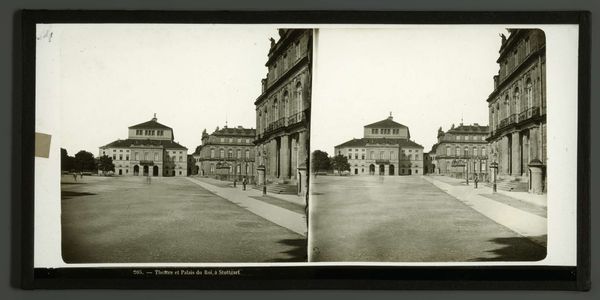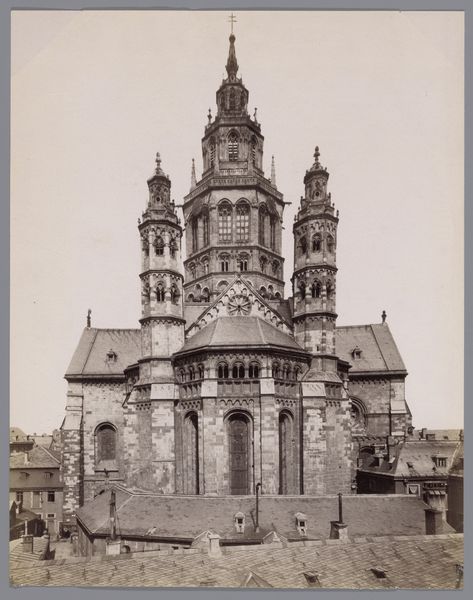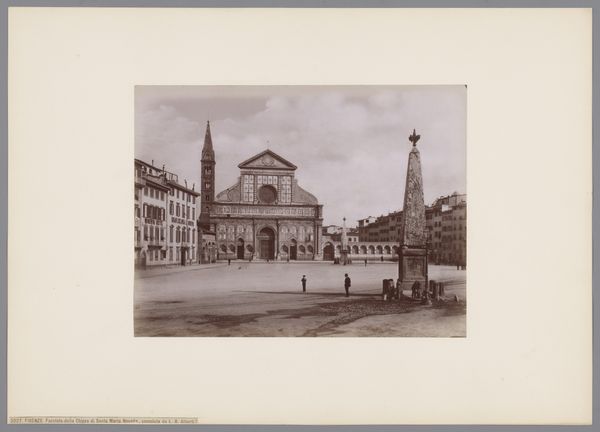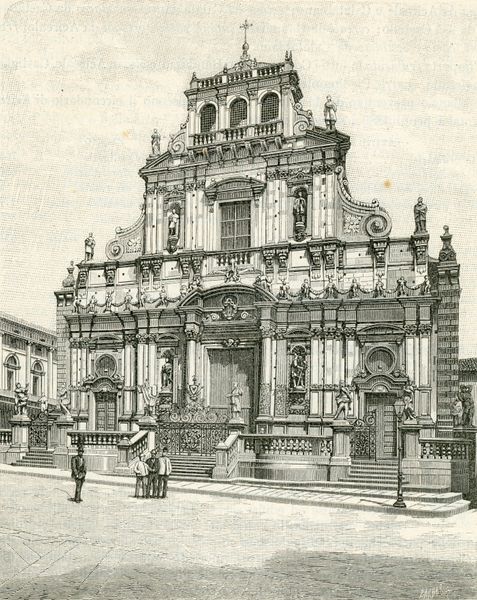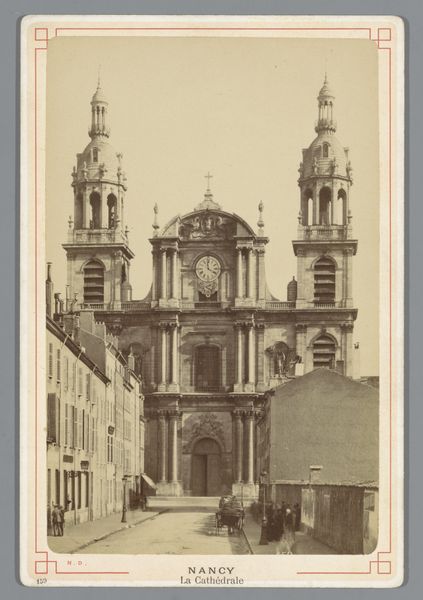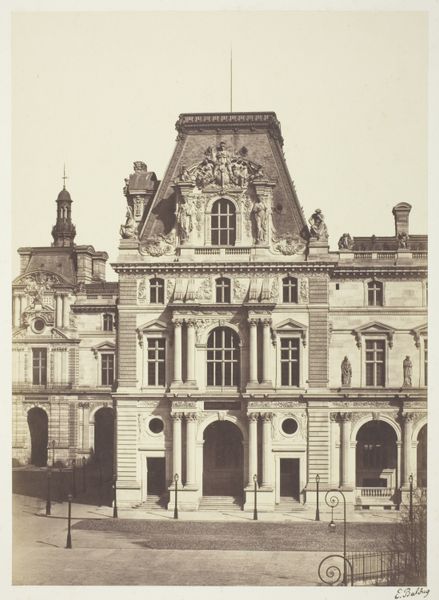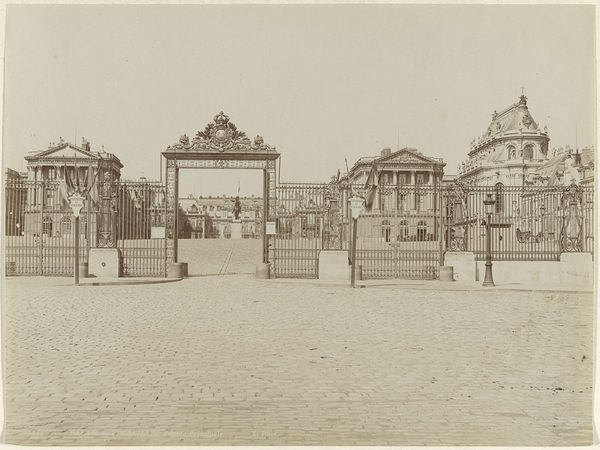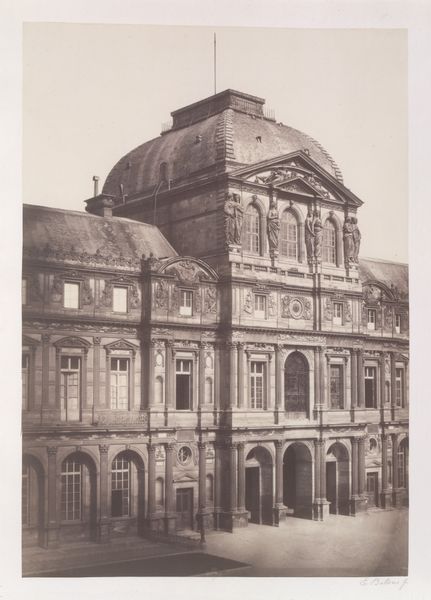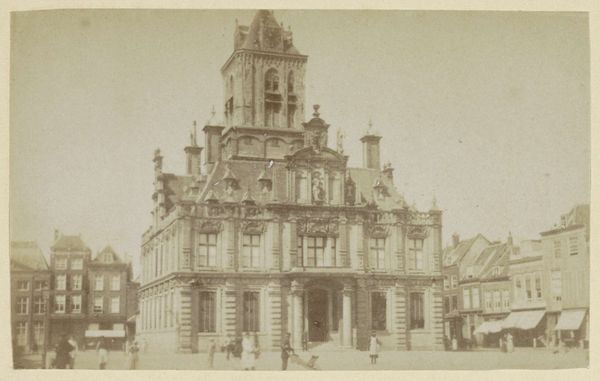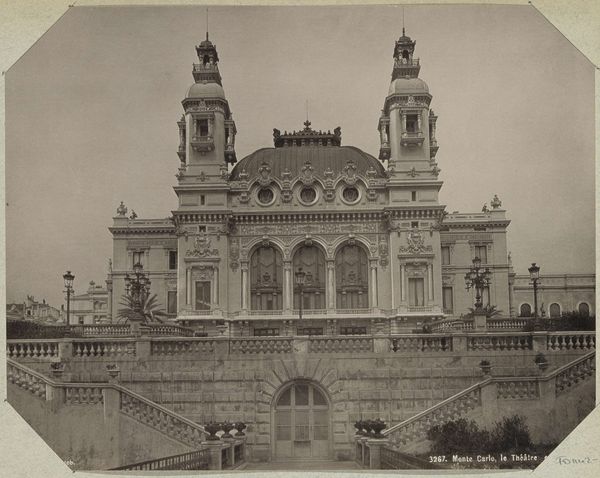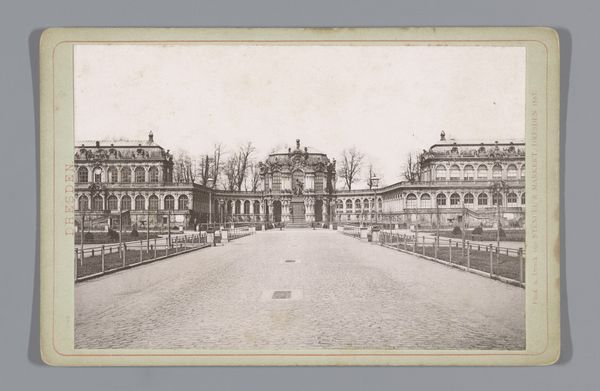
Dimensions: height 85 mm, width 170 mm
Copyright: Rijks Museum: Open Domain
Curator: Immediately, I'm struck by the geometry—the way the spherical dome dominates, offset by the severe rectilinear forms around it. There's such a strong tension there. Editor: This is "Frauenkirche in Dresden", a stereoscopic photograph produced sometime between 1860 and 1890 by Ferrier Père-Fils et Soulier. It captures the iconic church during a pivotal time in the city's history. Curator: Yes, one sees the careful composition of light and shadow creating texture. That strong diagonal created by the architectural features invites my eye up to the dome. And the material quality comes across even in the greyscale photography, the weight and presence. Editor: The Frauenkirche, a marvel of Baroque architecture, stood as a symbol of civic pride and Protestant identity in Dresden. This photograph allows us a glimpse into the urban landscape of the time. Photography, like this, provided a powerful new tool to document architectural wonders and disseminate them widely, shaping the grand tour for people who could only afford to participate from their parlors. Curator: I’m intrigued by the formal relationship between the building and the surrounding plaza – a strong play with the visual language around void and volume. The building’s ornate detail, softened, then repeated in smaller scale in those more pedestrian structures—an organizing structural element. Editor: Indeed, the Frauenkirche became a site loaded with conflicting symbolism after its destruction in World War II. During the GDR period, its ruins were purposefully left unreconstructed as a reminder of the war’s devastation. But its later reconstruction became a symbol of reconciliation and national healing within reunified Germany. Curator: The balance achieved, the play of verticals and horizontals, even though rendered in sepia tones, evoke a feeling of...grandeur. It does speak to a historical weight and sense of solemnity, a material culture made solid by its visual elements. Editor: Absolutely. Even through its duplication in the stereograph—made for optical recreation of depth—it reflects how urban monuments and buildings have been used to consolidate community identity throughout social, cultural and political shifts. That these prints went around is as important as their representation. Curator: Ultimately, it is the play of geometry that really gets me with this work: the visual structure gives an incredible impression. Editor: It speaks to our relationship to historical trauma. I found how the symbolic load evolved fascinating. Thank you for sharing.
Comments
No comments
Be the first to comment and join the conversation on the ultimate creative platform.
